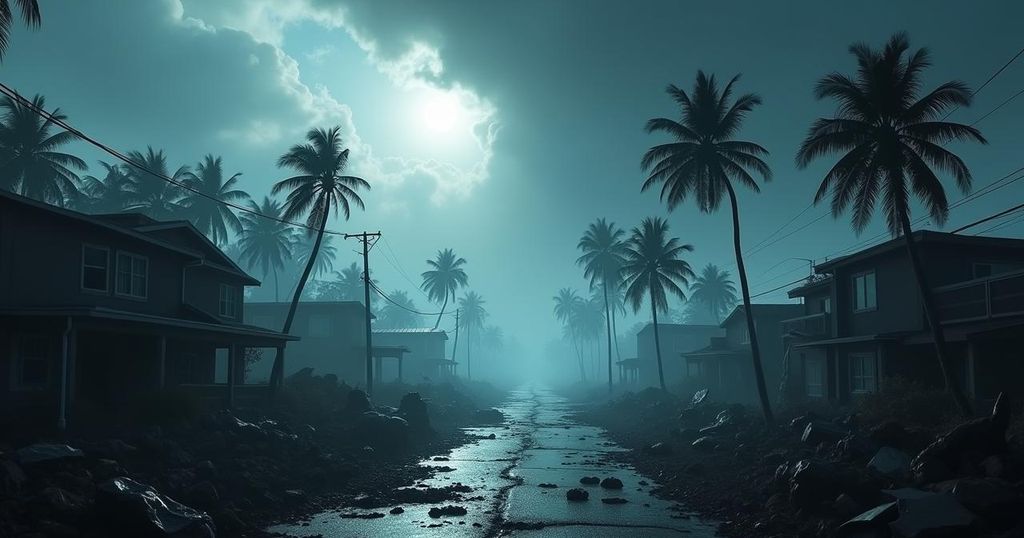Hurricane Helene: A Contemporary Catastrophe in U.S. History
Hurricane Helene has become one of the deadliest hurricanes in modern U.S. history, ranking third in terms of death toll since 2000, primarily due to catastrophic flooding in western North Carolina. It has resulted in over 100 deaths across multiple states, exceeding previous storms in severity. Helene impacted Florida as a Category 4 storm, leading to substantial property damage estimated at $26 billion.
Hurricane Helene has emerged as one of the most lethal hurricanes of the modern era, following a catastrophic impact on the United States. As the death toll rises, Helene has positioned itself among the deadliest hurricanes since the establishment of advanced weather forecasting technology, currently holding the third highest death toll since 2000, surpassed only by Hurricanes Maria, which struck Puerto Rico in 2017, and Katrina, which devastated New Orleans in 2005. Helene’s toll has exceeded that of Hurricane Ian, which impacted Florida in 2022, and the impacts of Superstorm Sandy in 2012, which was not classified as a hurricane upon landfall. The majority of fatalities have occurred in western North Carolina, where severe flooding ensued as the region experienced an unprecedented 20 to 30 inches of rain within a mere three-day period. This extreme rainfall was notably divided into two significant rounds, one prior to and another subsequent to Helene’s landfall in Florida’s Big Bend area, where it initially struck as a Category 4 hurricane with sustained winds reaching 140 mph. The repercussions of this hurricane extend beyond Florida, impacting various states with reported fatalities, which include: – Florida: At least 19 deaths – Georgia: At least 33 deaths – South Carolina: At least 41 deaths – North Carolina: At least 61 deaths – Tennessee: At least 11 deaths – Virginia: At least 2 deaths The National Oceanic and Atmospheric Administration has emphasized that hurricanes inflict the highest levels of mortality and destruction among all weather phenomena, with increased deadliness observed over recent decades. The official count of deaths attributed to hurricanes may significantly underrepresent the reality, as numerous indirect fatalities can occur in the aftermath, prolonging the storm’s impact over time.
Hurricanes are among the most dangerous natural events, associated with high levels of destruction and loss of life. Their impacts are exacerbated by flooding, wind damage, and storm surge. The evolution of weather forecasting since the 1950s has allowed for better tracking and predictions; however, storms remain unpredictable, and preparation is often a challenge for vulnerable regions. Hurricane Helene’s catastrophic impact, particularly in North Carolina, exemplifies the continuing threat posed by hurricanes and the significant repercussions they can have on communities and states alike.
In summary, Hurricane Helene signifies one of the deadliest hurricanes in recent times, resulting in significant loss of life across multiple states, with western North Carolina bearing the brunt of its impact through severe flooding. This event, along with the historical context of prior deadly hurricanes, underscores the ongoing risks hurricanes pose, necessitating vigilance and preparedness in affected areas.
Original Source: www.washingtonpost.com




Post Comment